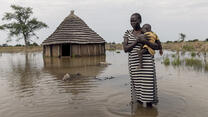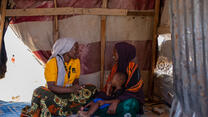The magnitude of urban disasters in high population densities – combined with complex social, political, economic and institutional environments – has challenged the manner in which humanitarian agencies are used to working. Humanitarian agencies are now grappling with how to change their approaches to this reality. This desk review aims to provide an audit and analysis of existing context analysis tools along the themes of governance and power analysis; vulnerability, social and conflict analysis; and urban systems analysis. The lack of contextual understanding by urban humanitarian response has often been cited. This review finds that there are strong context analysis methodologies but the application and existence of tools specifically designed for urban humanitarian response remains limited. The tools that are available often require substantial time to conduct data collection and analysis. They are also frequently narrow in analytical focus, fail to address the multi-scalar nature of a city, and lack specificity in tool selection and methodology. The review suggests that the advancement of an urban context analysis tool for humanitarian response is needed and should aim to build from the strengths of existing tools and learning from new tools that are under development.
Key recommendations and conclusion
Recommendations for an urban-adapted context analysis tool
The review found that there are many existing tools with strengths and potential utility for analysing an urban context, but there is not a singular tool that can capture all of the key criteria in an efficient assessment for an urban displacement crisis. As such, this desk review recommends an adaptation and combination of several tools that were reviewed in this study. By combining tools in a harmonised toolkit, the urban context analysis will be able to build on each respective strength to create a more analytically comprehensive and resource/ time-efficient tool that leads to practical entry points for programme design and coordination. Specifically, the review found that components of political economy analysis, conflict analysis, social network analysis, market analysis, service delivery analysis and spatial analysis are essential and should be considered when developing the tool.
Furthermore, the review recommends that the urban context analysis tool should analyse the following categories of systemic issues: political, economic, social and the built environment.
Recommendations for features of context analysis tool
The following section seeks to summarise key principles that the tool should take into account specific to urban contexts:
- People centred – capture perceptions of the people who live in the areas to ensure responsiveness to community needs and an understanding of the multiple identities of people living in urban areas.
- Multi-scalar – reflect the multiple scales of systems that operate in a city from individual, household and neighbourhood to district, city and onwards.
- Systems-based – acknowledge that the urban environment is comprised of various interrelated and interlinked systems (political, socio-economic, infrastructural etc.) that are influenced by forces internal and external to a specific urban setting.
- Built environment – recognise and account for the physicality of the city and the manmade structures and infrastructure services in connection with the natural environment and ecosystems of cities and surrounding areas. Analyse buildings, land tenure, road networks, public open spaces, infrastructure systems (such as water supply or energy networks) etc. even though the agency does not intend to work on them because these things form and influence the success of any social, political or economic activities carried out.
- Rapid – ensure ease of use and the ability to do a rapid assessment of an area because urban spaces are fluid and will continue to be.31
The following principles relate to the use of context analysis in any setting whether urban or rural:
- An urban context analysis should pick a pre-defined geographical boundary.
- The tool should be self-reflective by recognising the interests of all actors including those conducting the analyses.
- The context analysis needs to be multi-sectoral in nature to avoid the development of a sectoral entry point.32
- The context analysis should take into account spatial dimensions where possible. Numerous reports recognise the importance of geospatial mapping, but there remains a capacity gap in humanitarian actors to conduct this type of analysis and a lack of available geospatial data in many locations.
- Analysis is only one part of the process. First, a context analysis can be part of a process of building common understanding, trust and engagement between actors in an urban setting. This is critical for building coordination. Second, for context analysis to have an impact on the design and planning of programmes, it needs to be embedded and occur more than once. Analysis needs to be refreshed to reflect changes in the context.
- Connected to the prior point, the context analysis tool should aim to engage multiple stakeholders in a process of joint analysis. While certain findings in the context analysis may be sensitive, other findings may be critical to other humanitarian actors and government actors. The context analysis should as much as possible aim to be jointly conducted or in partnership with other organisations including government working in a particular area; and the findings shared as widely as possible within reason, based on the sensitivity of findings.
Conclusions
Humanitarian response in urban settings requires a shift from direct service provision to supporting and empowering local urban responders and filling gaps in existing service provision. As such, this requires a sound understanding of the underlying factors of why things are the way they are and the entry points for addressing systemic challenges. Context analysis is not an end in and of it itself. Context analysis is the starting point of a process to understand and continue to adapt and respond to the complexity and fluidity of an urban environment. This desk review of the selected context analysis tools presents a unique opportunity to develop a user-friendly urban context analysis tool that will enable humanitarian and development actors, including local government authorities, to better respond to people affected by displacement.



